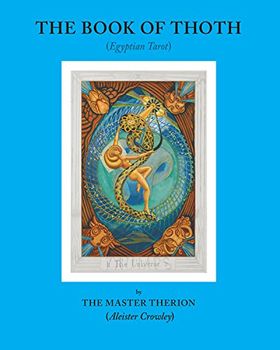
The Top Six Tarot Books of All Time
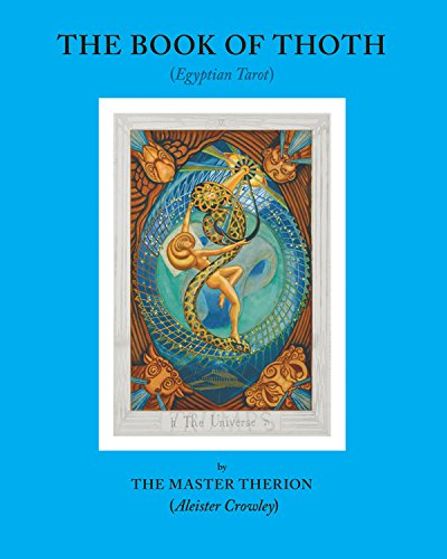
1) The Book of Thoth by Aleister Crowley
Aleister Crowley’s The Book of Thoth is often regarded as one of the most intricate and intellectually ambitious works ever written on tarot. Drawing on a vast array of sources—from Zoroastrian cosmology to Egyptian funerary texts, the Greek mysteries, the I Ching, and the Periodic Table—Crowley sought to create a tarot system that united the world’s major esoteric traditions under a Hermetic Qabalistic framework.
What distinguishes this book is not only its extensive cross-cultural synthesis but also Crowley’s approach to the tarot as a living organism. His discussions rarely focus on simple “fortune-telling” interpretations. Instead, each card is described as embodying a set of energetic, emotional, and spiritual dynamics derived from its elemental, astrological, and Qabalistic dignities. The section on the Court Cards remains unmatched in psychological nuance, portraying these archetypes as vividly alive, complex personalities.
Although Crowley’s Victorian style can be imperious, it conceals a master’s genuine respect for the tarot as a universal key to spiritual unity—a perspective that continues to inspire serious tarot scholars and magicians.
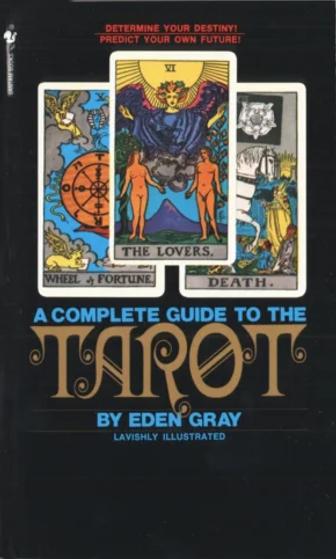
2) The Complete Guide to the Tarot by Eden Gray
Eden Gray’s The Complete Guide to the Tarot has long been a classic entry point into tarot study, particularly for practitioners drawn to the Rider-Waite-Smith tradition. First published in the early 1970s, it provided one of the earliest accessible roadmaps to tarot symbolism, card meanings, and basic spreads at a time when reliable sources were rare.
Gray offers brisk but clear historical context before diving into card interpretations. Her concise definitions, along with nearly full-page black-and-white line art of each card, create a straightforward handbook that many readers still consult decades later. Particularly notable is her exploration of astrological and Qabalistic correspondences, which she integrates without overtly naming the Golden Dawn as her likely source—an omission that makes the text oddly intriguing for more advanced students.
This modest, utilitarian book has remained virtually unchanged for over fifty years. Its durability is a testament to its clarity and enduring practicality as a foundational reference for card meanings and simple spreads.
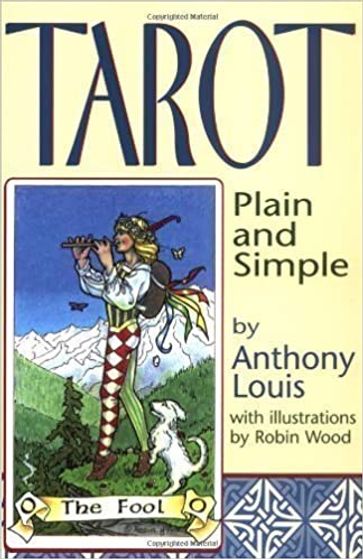
3) Tarot Plain and Simple by Anthony Louis
Anthony Louis’s Tarot Plain and Simple serves as an ideal intermediate resource, bridging the gap between beginner-friendly summaries and more advanced occult texts. The book is thoughtfully organized, beginning with essential tarot history and classic spreads, followed by detailed explorations of each card.
Each card entry opens with succinct definitions and then unfolds into extensive “Key Words and Phrases,” offering a rich linguistic palette for interpretation. A dedicated “Situation and Advice” section grounds these ideas in practical reading contexts, while additional references to personality types deepen the psychological dimension of the cards.
Louis’s approach feels like reading a well-annotated commonplace book—an accumulation of insights from tarot journals, literary references, and popular culture. Concluding tables on astrological and numerological connections further enrich the book’s value. Despite the casual title, the work is meticulous, reflecting careful consideration of language and meaning that supports both intuitive and structured reading styles.
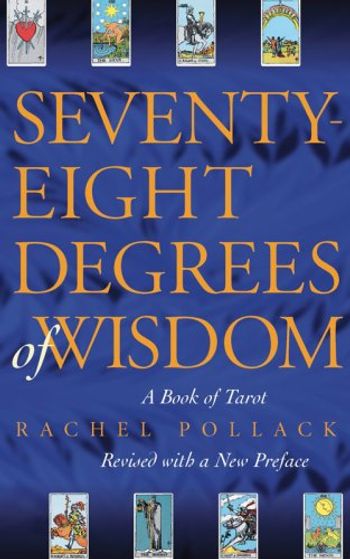
4) Seventy-Eight Degrees of Wisdom by Rachel Pollack
Rachel Pollack’s Seventy-Eight Degrees of Wisdom stands among the most celebrated works on tarot, offering a profound synthesis of literary, psychological, mythological, and cultural perspectives. Often likened to an extended series of essays or meditations, the book explores tarot not just as a predictive system but as a mirror of the human psyche and collective narratives.
Pollack’s analysis of the Fool, for example, illuminates how the Trickster archetype surfaces more often in uncodified mythologies than in institutionalized religions—a reflection on how stories provide spaces to explore fears that rigid dogma cannot safely contain. This blend of scholarly depth and clear, conversational language creates an engaging dialogue on tarot that feels both timeless and freshly insightful.
Rich with references to the Western literary canon, psychology, and spiritual symbolism, Pollack’s work continues to be a cornerstone for readers who see tarot as a tool for personal growth and philosophical exploration, not merely divination.

5) The Qabalistic Tarot by Robert Wang
obert Wang’s The Qabalistic Tarot is widely regarded as one of the clearest expositions of how the tarot integrates with the Hermetic Qabalah. Drawing on the Golden Dawn’s esoteric system, Wang meticulously maps the tarot across the ten sephirot of the Tree of Life, starting from the most concrete realm (Malkuth) and ascending toward the ineffable Crown (Kether).
Wang’s method—beginning with the tens and moving upward through the ranks of the minor arcana and finally to the major arcana pathways—offers a systematic, almost architectural way of understanding why the cards carry the meanings they do. His narrative is reinforced by illustrations from multiple decks, including the Golden Dawn, Thoth, Rider-Waite-Smith, and the Tarot de Marseille, making abstract connections visually accessible.
Although scholarly, the book remains deeply practical for serious students who want to integrate the philosophical and mystical underpinnings of the tarot into their readings. Over time, it often becomes a trusted companion for practitioners exploring tarot as a spiritual discipline intertwined with Western esoteric traditions.
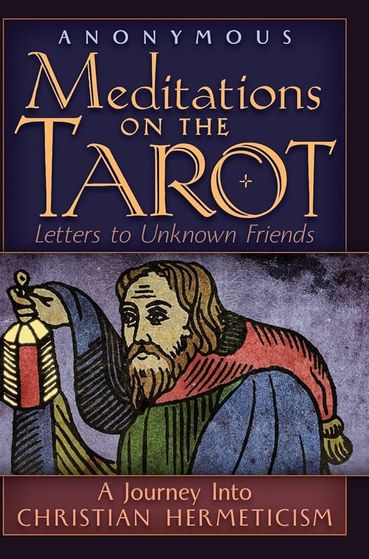
6) Meditations on the Tarot: A Journey into Christian Hermeticism
Written anonymously by a French Catholic thinker and first published posthumously, Meditations on the Tarot: A Journey into Christian Hermeticism stands apart as a profound spiritual treatise that uses the tarot as a series of contemplative gateways. Far from a manual of card meanings, this work presents twenty-two letters, each focused on one of the Major Arcana, weaving together Christian mysticism, Neoplatonism, depth psychology, and Hermetic philosophy.
Each meditation invites the reader into a reflective relationship with the archetypes, exploring them not as fixed symbols, but as living spiritual realities that guide the soul toward deeper union with the divine. The text is infused with poetic language and sweeping metaphysical insight, making it essential reading for anyone drawn to tarot as a vessel for interior transformation rather than fortune-telling.
This book is often revisited many times over a lifetime, with fresh revelations emerging at each stage of spiritual development.
Conclusion: Foundational Texts for a Lifelong Tarot Journey
Together, these works provide more than just techniques or meanings; they form an evolving library of philosophy, psychology, mysticism, and literary insight. Whether focusing on the structured rigor of Wang, the mythic storytelling of Pollack, the elemental synthesis of Crowley, or the devotional contemplations found in Meditations on the Tarot, each book helps tarot readers build a practice that is intellectually rigorous and spiritually expansive.
In revisiting these texts, readers often find not only a deeper grasp of the tarot but also a richer understanding of themselves—proof that the most enduring tarot books are those that grow and change along with their students.
Related Articles
Your First Tarot Deck Must Be a Gift: Fact or Fiction?
Debunking the myth that your first tarot deck must be a gift—why it’s a superstition, what tarot experts say, and how intention and connection truly matter.
The Ultimate Guide to Daily Tarot Pulls
Discover how daily tarot pulls help you build intuition, gain self-awareness, and learn tarot card meanings. Step-by-step guide, journaling tips, and FAQs.
You Must Be Psychic to Read Tarot: Truth or Total Myth?
Think you must be psychic to read tarot? Total myth. Discover why tarot is really about intuition, self-reflection, and personal growth — and how anyone can learn.